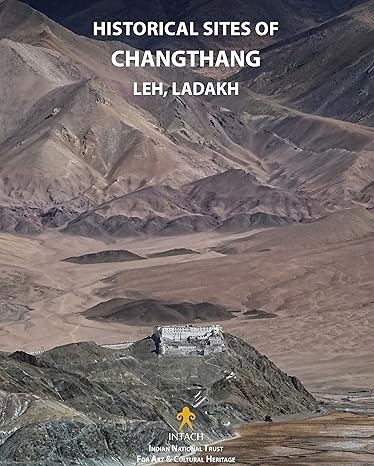Historical Sites of Changthang
Leh. Lasakh
Devers Quentin

|
|
Editeur - Casa editrice |
Architectural Heritage Division, Indian National Trust for Art and Cultural Heritage
|

Asia
India
Ladakh
|
|
Anno - Date de Parution |
2019
|
|
Pagine - Pages
|
253
|
|
Titolo originale
|
Historical Sites of Changthang, Leh Ladakh
|
|
|
|
|
|
|
|
|
|
|
|
|
|
|
|
|
|
 Historical Sites of Changthang
Historical Sites of Changthang

Nella serie di libri regionali sui siti storici del Ladakh, il secondo volume "Siti storici di Changthang" è un tentativo di identificare e documentare in modo completo i siti storici di Changthang, il tratto più orientale e più elevato del Ladakh nel distretto di Leh. Questo sforzo ha portato alla luce quasi duecentocinquantacinque siti storici in questa regione, tra cui monasteri, forti, chorten (stupa), incisioni rupestri, incisioni buddiste, templi, grotte, ecc. Le aree coperte sono Rong, Nyoma-Anley, Durbuk-Chushul, Gya e Rupshu-Kharnak. La documentazione è frutto della collaborazione tra l'INTACH Listing Cell e l'INTACH Ladakh Chapter, ed è stata realizzata dal Dott. Quentin Devers, ricercatore presso il Centro Nazionale Francese per la Ricerca Scientifica (CNRS) presso il Centro di Ricerca sulle Civiltà dell'Asia Orientale (CRCAO) di Parigi.
|
|
|
Recensione in altra lingua (English): |
|
In the series of the regional books on the historical sites of Ladakh, the second volume “Historical Sites of Changthang” is an effort to identify and comprehensively document the historical sites of Changthang, the easternmost and the highest stretch of Ladakh in Leh district. This endeavour brought to light nearly two hundred fifty-five historical sites in this region covering monasteries, forts, chortens (stupas), petroglyphs, Buddhist carvings, temples, caves, etc. The areas covered are Rong, Nyoma- Anley, Durbuk-Chushul, Gya and Rupshu-Kharnak. The documentation is a collaborative effort of INTACH Listing Cell and INTACH Ladakh Chapter, which has been carried out by Dr Quentin Devers, a researcher at the French National Centre for Scientific Research (CNRS) within the Research Centre for East Asian Civilizations (CRCAO), Paris. |
|
|
|